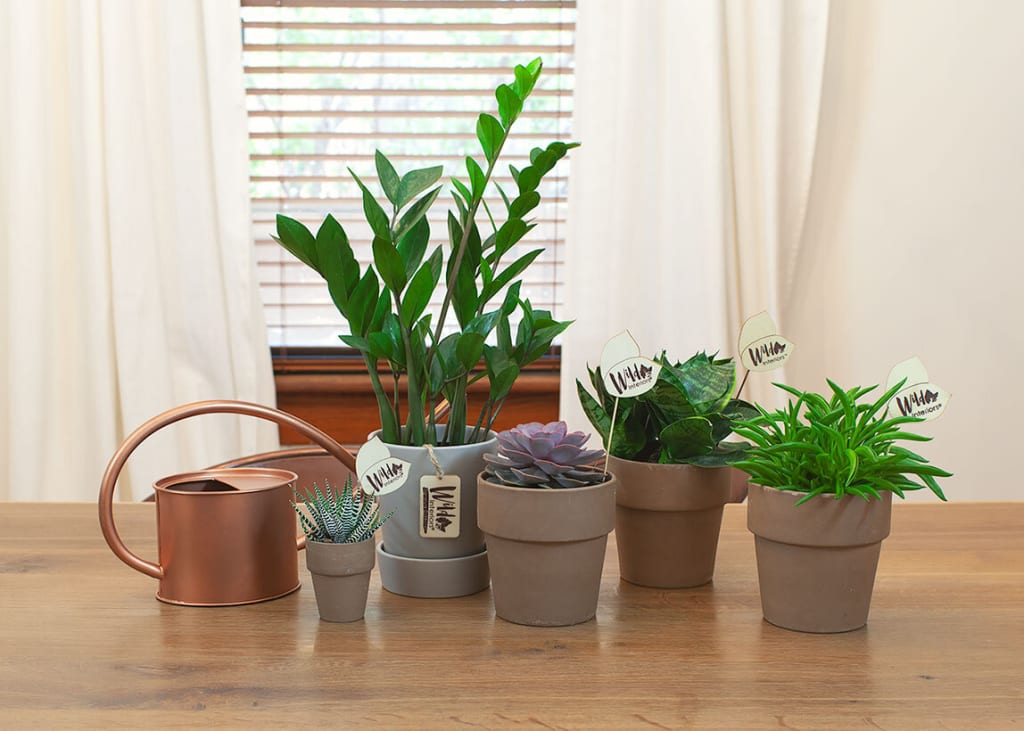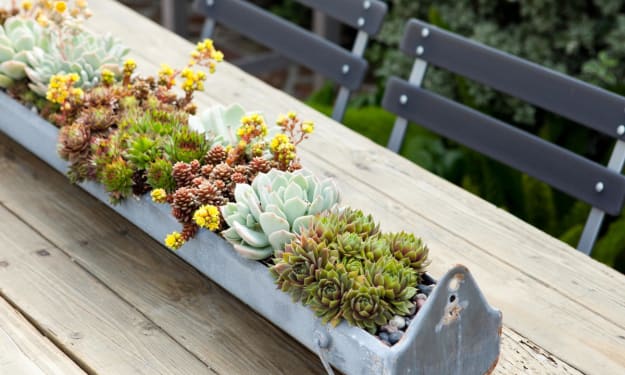Indoor Plants That Are Safe for Babies and Children
Indoor Plants That Are Safe for Babies and Children

Indoor Plants That Are Safe for Babies and Children: A Comprehensive Guide
Indoor plants not only enhance the aesthetics of your home but also offer a multitude of benefits, from improving air quality to reducing stress. For families with babies and young children, selecting the right indoor plants is crucial to ensure a safe and healthy environment. Many common houseplants can be toxic if ingested or touched, which makes it essential to choose child-friendly varieties.
In this comprehensive guide, we will explore a variety of indoor plants that are not only safe for babies and children but also offer a range of other benefits. These plants can help improve air quality, create a soothing atmosphere, and introduce kids to the wonders of nature. Let's delve into the world of child-friendly indoor plants.
Spider Plant (Chlorophytum comosum)
Description: Spider plants are renowned for their air-purifying properties and are considered one of the safest indoor plants for households with children. They have long, arching leaves with green and white stripes, making them a visually appealing addition to any room.
Benefits: Spider plants are excellent at removing common indoor air pollutants, such as formaldehyde and xylene. They are non-toxic to both humans and pets, making them a perfect choice for homes with little ones.
Care: Spider plants are low-maintenance and thrive in indirect sunlight. They prefer to be watered moderately, allowing the soil to dry between waterings.
Peace Lily (Spathiphyllum)
Description: Peace lilies are elegant, with dark green leaves and striking white blossoms that resemble a white flag of peace. They are a popular choice for their beauty and air-purifying qualities.
Benefits: Peace lilies are effective at removing airborne toxins like ammonia, benzene, and formaldehyde. While they are not entirely non-toxic, they are considered safe for children if ingested in small quantities. However, it's still best to keep them out of reach.
Care: These plants thrive in low to moderate light and prefer to be kept consistently moist but not waterlogged. They also appreciate occasional misting to maintain humidity levels.
Rubber Plant (Ficus elastica)
Description: Rubber plants are known for their glossy, deep green leaves that add a touch of elegance to indoor spaces. They can grow quite tall, making them a statement piece in any room.
Benefits: Rubber plants are not toxic to children or pets, making them a safe choice for family homes. They are also excellent at purifying the air by removing toxins like formaldehyde.
Care: These plants prefer bright, indirect light but can adapt to lower light conditions. Allow the soil to dry out between waterings, and make sure to avoid overwatering, as they are susceptible to root rot.
Boston Fern (Nephrolepis exaltata)
Description: Boston ferns are lush, feathery plants with delicate fronds that add a touch of greenery and elegance to indoor spaces.
Benefits: Boston ferns are safe for children and pets and are known for their air-purifying abilities, helping to increase indoor humidity levels and remove pollutants like formaldehyde.
Care: These ferns thrive in indirect light and require consistently moist soil. Regular misting is also beneficial to keep them healthy and prevent the fronds from drying out.
Snake Plant (Sansevieria trifasciata)
Description: Snake plants, also known as mother-in-law's tongue, are characterized by their tall, upright leaves with striking patterns. They are hardy and easy to care for.
Benefits: Snake plants are among the best air-purifying plants, removing toxins such as benzene, formaldehyde, and xylene. They are non-toxic and safe for both children and pets.
Care: Snake plants thrive in low to bright indirect light and are incredibly low-maintenance. Allow the soil to dry out completely between waterings, making them ideal for busy parents.
Aloe Vera (Aloe barbadensis miller)
Description: Aloe vera is a well-known succulent with thick, fleshy leaves containing a soothing gel. It's both visually appealing and useful for its medicinal properties.
Benefits: Aloe vera is safe for children and can provide relief for minor burns, scrapes, and insect bites with its gel. It also helps improve indoor air quality.
Care: Place aloe vera in bright, indirect sunlight and allow the soil to dry out between waterings. It's a low-maintenance plant that can thrive in a variety of indoor conditions.
Pothos (Epipremnum aureum)
Description: Pothos, also known as devil's ivy or golden pothos, features heart-shaped leaves with variegated patterns and is a popular choice for indoor spaces.
Benefits: Pothos is non-toxic and safe for children and pets. It's also an effective air purifier, removing common indoor pollutants like formaldehyde and benzene.
Care: Pothos is a versatile plant that can thrive in various light conditions, from low to bright indirect light. Water it when the top inch of soil feels dry.
Bamboo Palm (Chamaedorea seifrizii)
Description: Bamboo palms are known for their graceful, arching fronds and are an excellent choice for adding a touch of the tropics to your home.
Benefits: Bamboo palms are non-toxic and safe for children and pets. They also help improve indoor air quality by removing toxins like formaldehyde and benzene.
Care: These palms thrive in bright, indirect light and prefer consistently moist soil. Mist them occasionally to maintain humidity levels.
African Violet (Saintpaulia)
Description: African violets are petite, flowering plants known for their colorful blooms, making them an attractive addition to indoor spaces.
Benefits: African violets are non-toxic and safe for children and pets. They provide a pop of color and joy while improving indoor air quality.
Care: Place them in bright, indirect light and water them from the bottom to avoid getting water on the leaves, which can cause damage.
Christmas Cactus (Schlumbergera)
Description: Christmas cacti are festive, succulent plants known for their vibrant blooms that typically appear around the holiday season.
Benefits: Christmas cacti are non-toxic and safe for children and pets. They bring seasonal charm indoors while requiring minimal care.
Care: Keep them in bright, indirect light and allow the soil to partially dry out between waterings. They appreciate slightly higher humidity levels.
Baby Rubber Plant (Peperomia obtusifolia)
Description: Baby rubber plants, or peperomias, have thick, glossy leaves and a compact growth habit, making them an excellent choice for smaller spaces.
Benefits: Baby rubber plants are non-toxic and safe for children and pets. They are visually appealing and can help improve indoor air quality.
Care: Place them in moderate to bright indirect light and allow the soil to dry out slightly between waterings.
Lavender (Lavandula)
Description: Lavender is a fragrant herb known for its lovely aroma and soothing properties, making it a popular choice for bedrooms.
Benefits: Lavender is non-toxic and safe for children and pets. Its soothing scent can help promote relaxation and better sleep.
Care: Keep lavender in a sunny spot and water it sparingly, as it prefers slightly drier conditions.
Calathea (Calathea spp.)
Description: Calathea plants are prized for their stunning, decorative leaves with intricate patterns that add a touch of elegance to any room.
Benefits: Calathea plants are non-toxic and safe for children and pets. They can also help improve indoor air quality by removing toxins.
Care: Calathea plants thrive in medium to bright indirect light and prefer consistently moist soil. Mist them regularly to maintain humidity.
Safety Tips for Indoor Plants with Children
While the plants mentioned above are generally safe for babies and children, it's essential to follow some safety guidelines to ensure a secure environment:
Keep plants out of reach: Place plants on high shelves, in hanging planters, or on furniture out of children's reach to prevent them from touching or eating the plants.
Teach plant care: Educate children about the importance of not touching or ingesting plants and involve them in caring for the plants to instill a sense of responsibility.
Monitor indoor humidity: Some plants, like Boston ferns and calatheas, thrive in higher humidity. Invest in a hygrometer to ensure humidity levels are comfortable but not excessively high.
Use childproof containers: Consider using heavy or sturdy plant pots that are less likely to tip over if a curious child tries to explore the plant.
Choose non-toxic varieties: Always verify the safety of a plant before bringing it into your home, and consult with a local nursery or plant expert if you're uncertain about a particular plant's toxicity.
Conclusion
Introducing indoor plants into your home can be a wonderful way to enhance your living space while reaping the benefits of improved air quality and aesthetics. For families with babies and young children, selecting child-friendly plants is essential to ensure a safe and healthy environment. The plants mentioned in this comprehensive guide not only offer safety but also bring beauty and positive energy to your home.
Remember to follow safety guidelines, educate your children about plant care, and enjoy the many benefits that these indoor plants provide. With the right choices and care, you can create a welcoming and child-safe indoor oasis that benefits the whole family.
About the Creator
Kavya Organic Garden
Passionate about home gardening, plant care, growth, and maintenance. Join me on this exciting journey of organic practices and sustainable gardening! 🌱






Comments
Kavya Organic Garden is not accepting comments at the moment
Want to show your support? Send them a one-off tip.